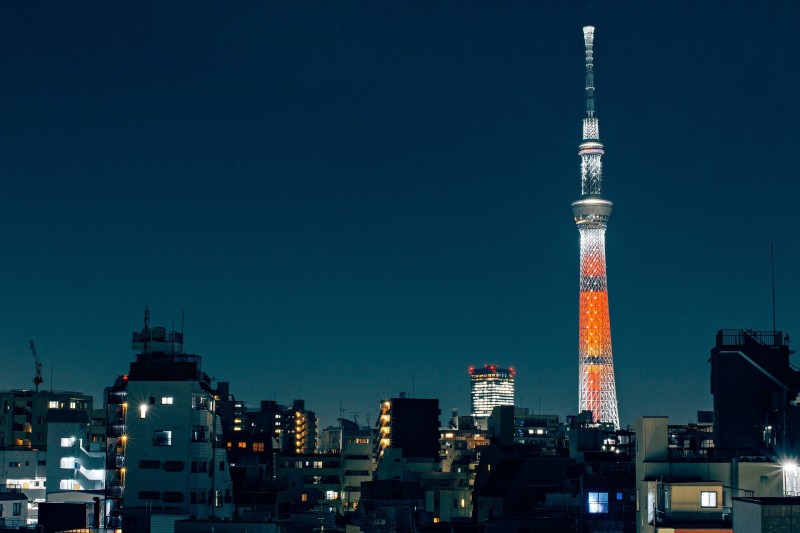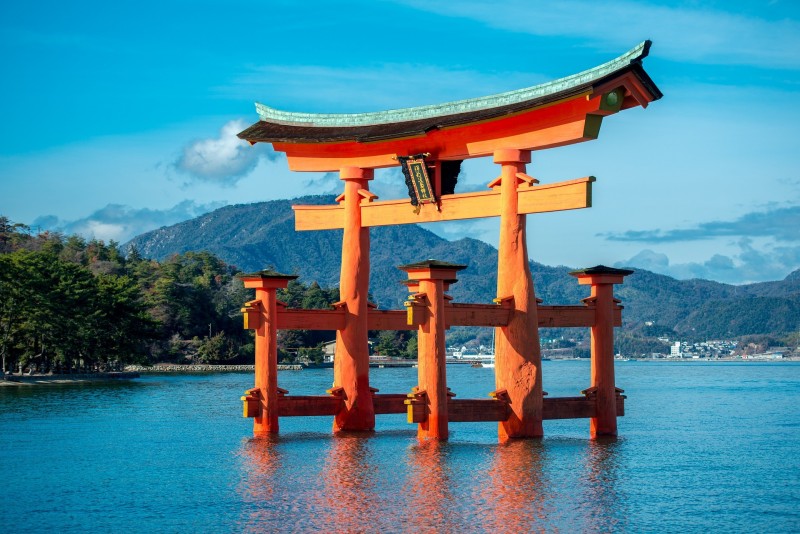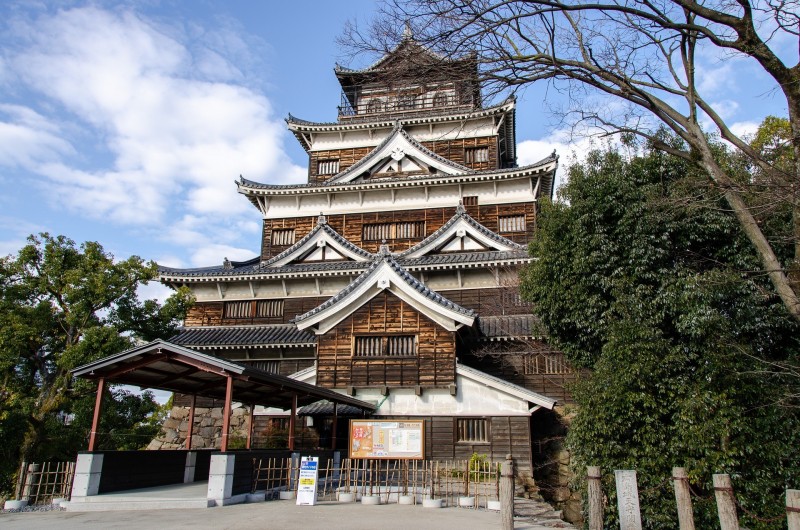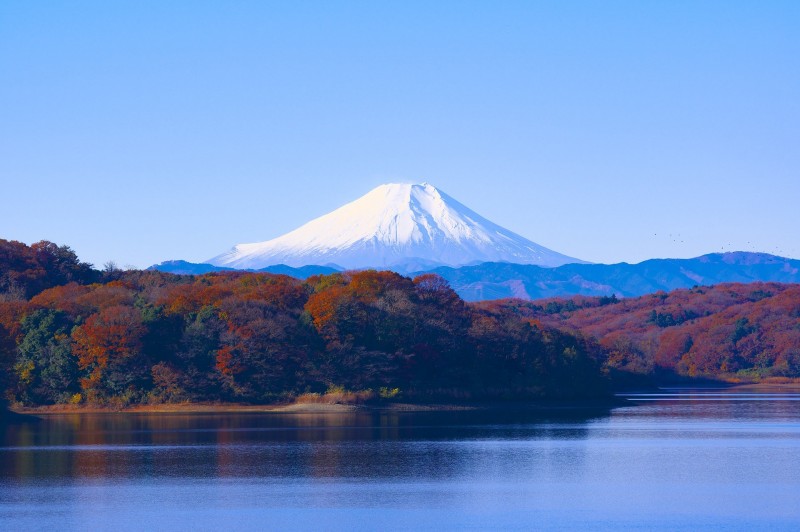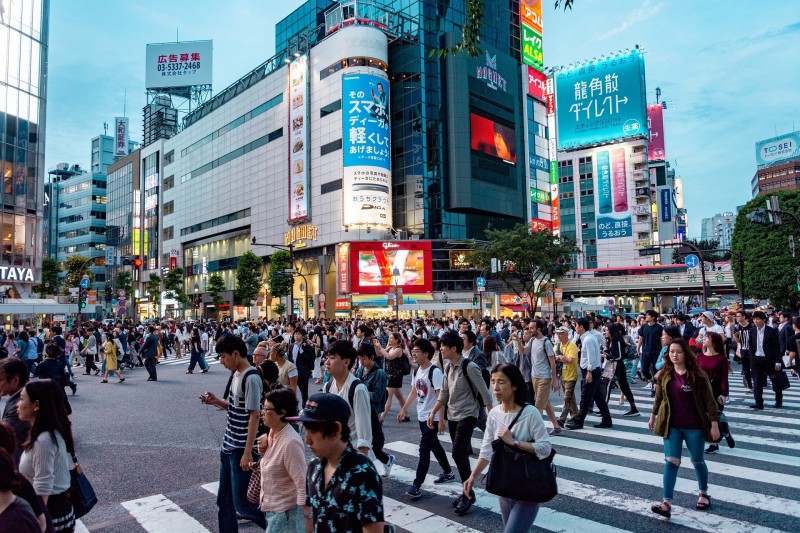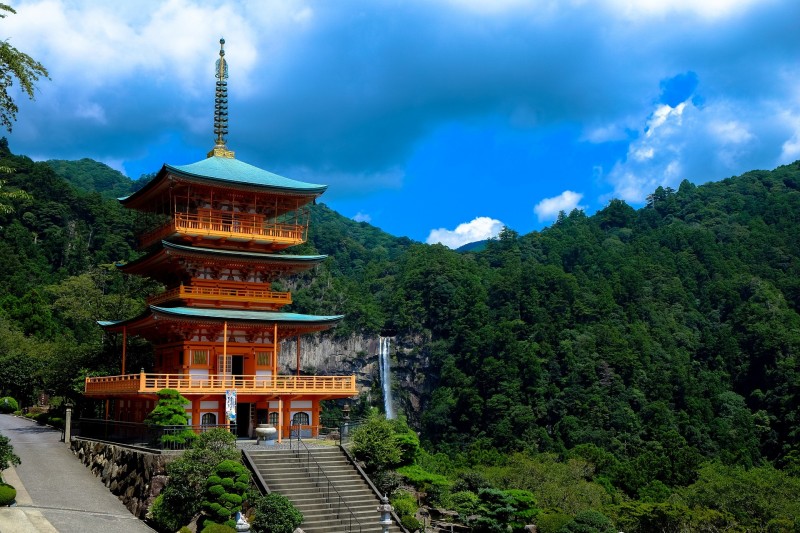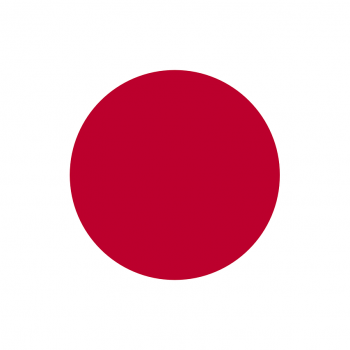Japan
Japan
Capital city description
Tokyo, the capital city of Japan - one of the world's most modern cities in terms of its infrastructure and design - mainly due to the 1923 earthquake and the devastation of WWII - Tokyo also holds the title of the world's most expensive city in which to live.
It is one of the best places to visit in Asia, home to the Imperial Palace and the seat of Government and Parliament. Located in East-Central Honshu, the largest of Japan's main islands, the artistic side of Tokyo is famous for its top attractions, including museums, festivals, and professional sports clubs.
Climate
- Japan’s climate varies significantly with altitude and location on the Pacific Ocean or the Sea of Japan side. The northern part of Japan has warm summers but long, cold winters with heavy snow. In its elevated position, the central part of Japan has hot, humid summers and moderate to short winters, with some areas having hefty snow, and the southwestern part of Japan has long, hot, humid summers and mild winters.
- Spring: March to May
- Summer: June to August
- Autumn: September to November
- Winter: December to February
Languages spoken
People in Japan speak languages from two primary language families: the Japonic languages and the Ainu. Several languages or dialects in Japan include the Ryukyuan languages, Ainu languages, the Orok language, and the Nivkh language, which belong to two main languages.
Fun/Fascinating Facts
- The Japanese language orders word differently than usual do in English. Instead of ordering sentences by subject-verb-object (i.e., I write words), Japanese uses subject-object-verb (i.e., I words write).
- A bow is a necessary form of greeting in Japan, and Japanese people work hard to perfect it. The depth of the bow is significant—lower bows show more respect.
- Traditional Japanese rooms are tiled with Tatami or mats made with rice straw. A mat’s length is always twice its width, and its size is standardized depending on the region.
- The world’s largest seafood market is the Tsukiji fish market in Tokyo. The market employs over 60,000 people and opens at 3:00 am most mornings, with its popular wholesale tuna auctions beginning at five.
- Japan is famous for its immaculate gardens, meticulously planned and maintained, and considered high art. “Borrowed scenery” is an essential element in garden design;
Unique Customs/Traditions
- In Japan, people greet by bowing to one another. A bow can range from a slight nod of the head to a deep bend at the waist. A deeper, longer bow indicates sincere respect, while a slight nod is more casual and informal. Additionally, bowing with your palms together at chest level is not customary in Japan. If the greeting takes place on the tatami floor (a mat), people get on their knees to bow.
- The most important table etiquette in Japan is saying customary phrases before and after a meal. It is common for Japanese people to say "itadaki-masu" (meaning "I humbly receive" or "let's eat") before a meal and "gochisou-sama" after a meal. These phrases mean thanks for the food and indicate the beginning and the ending of a meal.
- Shoes are never worn in someone's home or on Japanese tatami flooring (mats). It is expected to take off your shoes in a restaurant, hotel, hot spring resort, etc. There will always be a place to put your shoes. In addition, you will be given slippers to wear. There are often different slippers for the bathroom. You should never wear the regular slippers into the bathroom (if bathroom slippers are provided) and vice versa.
- Gift-giving is a normal part of Japanese culture. Different types of gifts are given depending on the occasion.
Popular universities
| Name | Description | |
|---|---|---|
| University of Tokyo | The University of Tokyo, also known as UTokyo or Todai, is a Japanese national university established in 1877. The university has three main campuses – the Hongo, Komaba, and Kashiwa campuses – and additional facilities in other parts of Japan. The university is affiliated with two hospitals: the University Hospital and the Institute of Medical Science Hospital. | |
| Keio University | Keio University is a private higher education institution located in the urban setting of the large metropolis of Tokyo. This institution also has a branch campus in Fujisawa. Founded in 1858 and officially recognized by the Ministry of Education, Culture, Sports, Science, and Technology of Japan. Keio University offers courses and programs leading to officially recognized higher education degrees such as bachelor's degrees in several areas of study. | |
| Kyoto University | Kyoto University is a non-profit public higher education institution located in the metropolis of Kyoto. Established in 1897 and officially recognized by the Ministry of Education, Culture, Sports, Science, and Technology of Japan. Kyoto University offers courses and programs leading to officially recognized higher education degrees such as bachelor's degrees in several areas of study. | |
| Tokyo Institute of Technology | Tokyo Institute of Technology is a non-profit public higher education institution located in the urban setting of the large metropolis of Tokyo. Established in 1881 and officially recognized by the Ministry of Education, Culture, Sports, Science, and Technology of Japan. Tokyo Institute of Technology offers courses and programs leading to officially recognized higher education degrees such as bachelor's degrees, master's degrees, doctorate degrees in several areas of study. | |
| Hokkaido University | Hokkaido University is a non-profit public higher education institution located in the urban setting of Sapporo, Hokkaido. Established in 1918 and officially recognized by the Ministry of Education, Culture, Sports, Science, and Technology of Japan. Hokkaido University (Hokudai) offers courses and programs leading to officially recognized higher education degrees such as bachelor's degrees, master's degrees, doctorate degrees in several areas of study. This institution also has branch campuses in the following locations: Hakodate, Hokkaido. | |
| Ritsumeikan University | Ritsumeikan University is a private higher education institution located in the urban setting of the metropolis of Kyoto. Founded in 1899 and officially recognized by the Ministry of Education, Culture, Sports, Science, and Technology of Japan. Ritsumeikan University offers courses and programs leading to officially recognized higher education degrees such as bachelor's degrees in several areas of study. | |
| Tohoku University | Tohoku University is a non-profit public higher education institution located in the urban setting of the metropolis of Sendai, Miyagi. Established in 1907 and officially recognized by the Ministry of Education, Culture, Sports, Science, and Technology of Japan. Tohoku University offers courses and programs leading to officially recognized higher education degrees such as bachelor's degrees, master's degrees, doctorate degrees in several areas of study. | |
| Osaka University | Osaka University (OU) is a Japanese national university founded in 1931 as the sixth imperial university of Japan. It is located in Osaka, Japan, and has three main campuses – Suita, Toyonaka, and Minoh. In 2007, the university merged with the Osaka University of Foreign Studies. Upward of 23,000 students attended the institution in a recent year, and around two-thirds of them studied at the undergraduate level. | |
| Nagoya University | Nagoya University is a Japanese national university that traces its roots back to 1871 when its predecessor medical school was established. In 1939, the institution became the last imperial university of Japan. The university is located in Nagoya – the capital of the Aichi prefecture in Japan. It also has satellite campuses in other countries, including Cambodia, Mongolia, and Vietnam, which offer programs for doctoral students. More than 15,500 students attended Nagoya University recently, and more than 60 percent of them studied at the undergraduate level. | |
| Kyushu University | Kyushu University is a non-profit public higher education institution located in the urban setting of the metropolis of Fukuoka. Established in 1911 and officially recognized by the Ministry of Education, Culture, Sports, Science, and Technology. Kyushu University offers courses and programs leading to officially recognized higher education degrees such as bachelor's degrees in several areas of study. | |
Festivals & Events
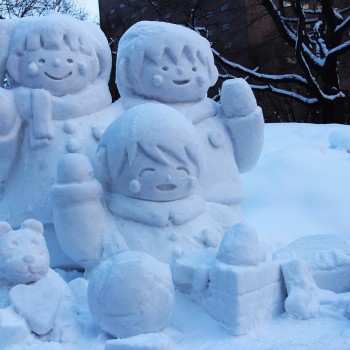
Sapporo Snow Festival
Date: February
The Sapporo Snow Festival, which started in 1950, is an annual event held at the beginning of every February. It is the hugest winter festival and drags more than 2 million visitors every year.
There are numerous different highlights, but the gigantic snow statues/buildings throughout Odori Park must be the festival's climax.

Sanja Festival
Date: May
The Sanja Festival, also known as Sanja Matsuri is an annual festival in the Asuka district that usually takes place over the third weekend in May. It is held in celebration of the three founders of Sensoji Temple, who are enshrined in the Asakusa Shrine next door to the temple. Nearly two million people visit.
The Sanja Matsuri features about one hundred portable shrines (mikoshi). Shinto deities (kami) are symbolically placed into and paraded about the streets to bring good fortune to the local businesses and residents.
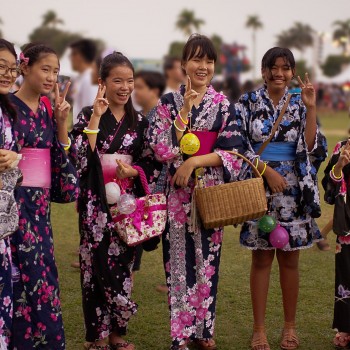
Setsubun
Date: February 3
Setsubun, Japan's bean-throwing festival to celebrate the beginning of spring, is observed each year on February 3 during the Haru Matsuri (Spring Festival). Japanese believe that throwing roasted soybeans known as fuku mame (fortune beans) removes evil spirits that bring sickness and prevent good fortune.
Setsubun celebrations have become fun, chaotic affairs in some cities. Crowds jostle and surge for beans (eating them is good luck), prizes, and freebies tossed from public stages—often by celebrity hosts.

Hanami (Cherry blossom festival)
Date: March and April
Hanami is one of the most famous events of Spring. Crowds of people - families, groups of friends, and companies- gather under the fully open cherry blossoms and have a picnic celebration ( a hanami party!). The picnic fare consists of various foods, snack foods, sake (alcoholic beverages including rice wine, Nihonshu), or other drinks.
The celebration often includes dancing and karaoke in addition to the cherry blossom viewing. In trendy places such as Ueno Park and Yoyogi Park in Tokyo, prime picnic spots are intense
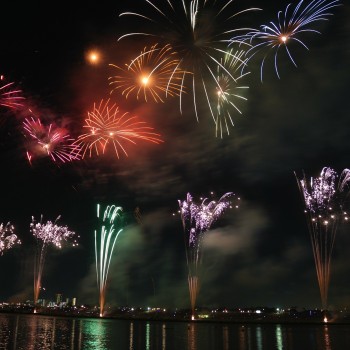
Japanese New Year
Date: January 1
New Year (正月, shōgatsu) is the most meaningful holiday in Japan. Most businesses shut down from January 1 to January 3, and families typically gather to spend the days together.
Homes and entrance gates are decorated with ornaments made of pine, bamboo, and plum trees, and clothes and houses are spotless. On New Year's eve, Toshi Koshi soba (buckwheat noodles), symbolizing longevity, are served.
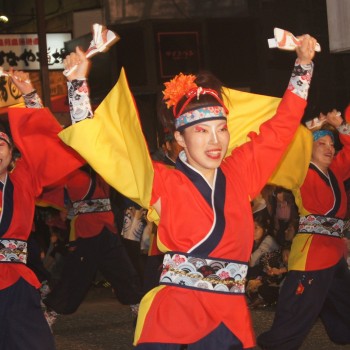
Awa Odori Dance Festival
Date: Awa Odori Dance Festival
The largest traditional dance festival in Japan and Tokushima's most famous attraction- Awa Odori, is held in Tokushima City in the secluded prefecture of Tokushima on Shikoku Island.
Celebrating for several days during mid-August, the Awa Odori boasts over 400 years of great history and is counted amongst Japan's Three Great Bon Odori festivals, all large-scale traditional dances occurring during the summertime holiday of Obon.
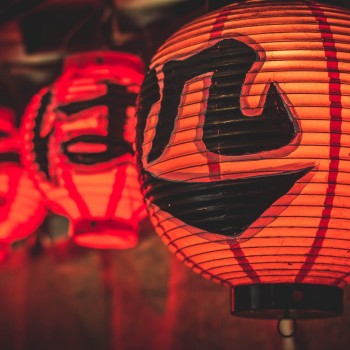
Nagasaki Lantern Festival
Date: Last week of January
The Nagasaki Lantern Festival, originally started by Chinese residents living in Nagasaki Chinatown celebrating the Chinese New Year, is now a dreamlike display of over 15,000 lanterns transforming the city into a tapestry of fiery reds and lively yellows. Held during the Lunar New Year, the festival attracts over 1 million visitors to Nagasaki City’s Chinatown and nearby locations to witness the lanterns alongside fireworks, traditional dances, theatre performances, and more.
The festival runs for around two weeks during an ever-changing period around late January and early February. There are seven main areas decorated with lanterns, including the Nagasaki Chinatown, Central Park, the Chinese district of Tojinyashiki, Kofukuji Temple, and more.
.jpg)
Tenjin Matsuri
Date: July 24-25
The Tenjin Matsuri is a spectacular summer festival in Osaka that begins on July 24 with rituals at the shrine and river, a shishimai lion dance, and prayers for Osaka's safety and prosperity. The celebrations are full of rituals, dance, and music featuring a procession of portable shrines and complete in a dazzling fireworks display that lasts for an hour and a half.
Way back a thousand years ago, Tenjin Matsuri festivals were held around the 25th each month at Tenmangu Shrines Japan-wide to honor the deity of scholarship Sugawara Michizane.
Attractions / Top Sights
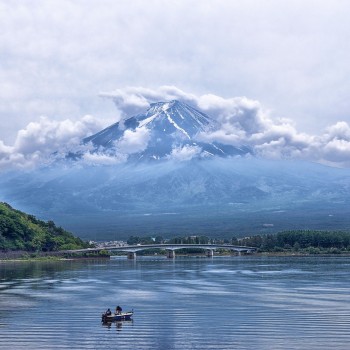
Mount Fuji
When to visit: Spring and Summer
When to visit: https://earthobservatory.nasa.gov/images/39099/mount-fuji-japan
With 3,776-meter-high (12,388 feet), Mount Fuji Volcano is the highest mountain, located on the island of Honshu in Japan; It is one of the world’s classic examples of a stratovolcano.
Mount Fuji has been considered an essential icon that UNESCO recognized its world cultural significance in 2013. It became a popular tourist attraction for sightseers and climbers. Fuji is climbed by more than a million people each summer as an act of pilgrimage, culminating in watching the sunrise from its summit.
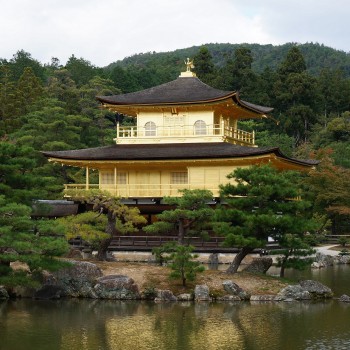
Temple of the Golden Pavilion
When to visit: In Spring and Autumn
Kinkaku-Ji also called the Temple of the Golden Pavilion, is the most famous tourist attraction in Japan and Kyoto. The pavilion was originally built as a retirement villa for Shogun Ashikaga Yoshimitsu in the late 14th century.
According to history, the pavilion was burnt down in 1950 by a young monk obsessed with it. Five years later, the temple was rebuilt as an exact copy of the original. The highlight is placed on the building and surrounding gardens being in harmony with one another.
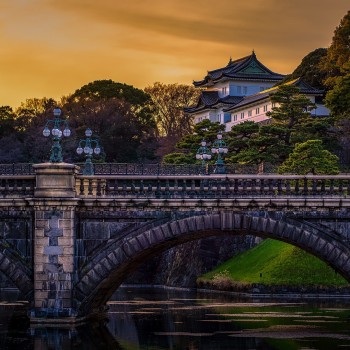
Tokyo Imperial Palace
When to visit: January and February
Tokyo's most famous landmark, the famous Imperial Palace, with its beautiful 17th-century parks surrounded by walls and moats- situated in the Chiyoda district of the Chiyoda ward of Tokyo, is the home of the Emperor of Japan.
The palace is set on the ruins of older castles destroyed by fire or war, and architects have honored the past by incorporating design elements of the different eras into the modern palace. The new palace is surrounded by traditional Japanese gardens and has many reception and function rooms to receive guests and welcome the public.
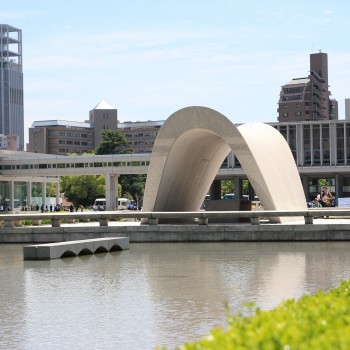
Hiroshima Peace Memoria
When to visit: March to April
The Hiroshima Peace Memorial, also known as Genbaku Dome, Atomic Bomb Dome, or A-Bomb Dome, has been made to commemorate the many victims of the world's first nuclear attack. Hiroshima was designated a UNESCO World Heritage Site in 1996.
Hiroshima Memorial has become a symbol of lasting peace to the over 140,000 people killed in the atomic bombing of Hiroshima at the end of World War II. More than a million people have visited Hiroshima Peace Memorial Park each year, many from overseas.
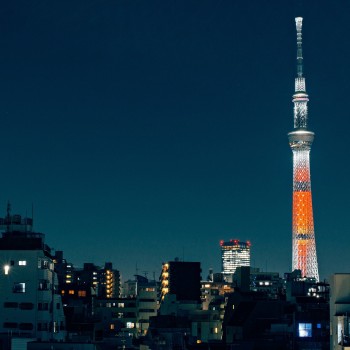
Tokyo Tower
When to visit: March and April / September to November
Tokyo Tower is an active broadcasting facility and a perfect spot for travelers to see the dazzling cityscape below. Patterned on the Eiffel Tower in design, Tokyo Tower was completed in 1958. At 333 meters tall, it became the second-tallest structure in Japan.
Its modernist charm can be appreciated from the outside as it lights up at night, but the real fun comes as you climb to the top to catch vibrant views of the city.
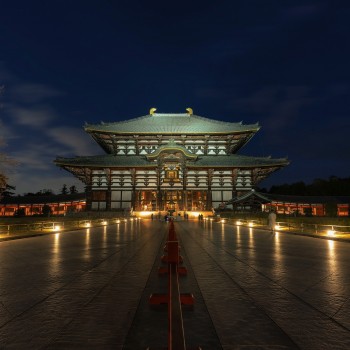
Todaiji temple
When to visit: March and April / September to November
When to visit: https://www.worldhistory.org/Todaiji/
The Todaiji is an ancient temple complex situated in Nara. It is not only the world’s largest wooden building; it is home to its most giant bronze great Buddha statue.
Surrounded by beautiful gardens and wildlife, the Kegon school of Buddhism is centered here, and the grounds hold many artifacts of Japanese and Buddhist history.
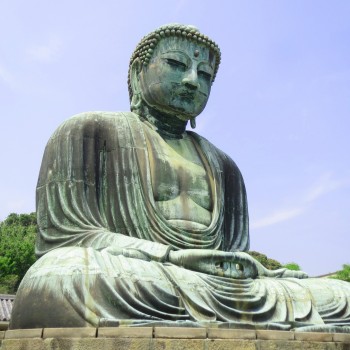
Great Buddha of Kamakura
When to visit: March and April / September to November
Kamakura Daibutsu, also known as the Great Buddha of Kamakura, is an outdoor bronze statue of Amida Buddha sitting in the posture of meditation. It is situated in Kotokuin Temple in Kamakura, Japan- the second tallest bronze Buddha statue in Japan, following its most giant bronze Buddha statue, Nara Daibutsu. The Kamakura Daibutsu stands at the height of 11.4 meters, weighing 121 tons.
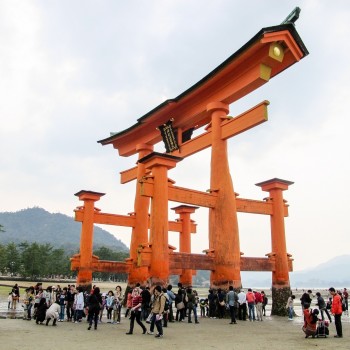
The Island Shrine of Itsukushima
When to visit: March and April / September to November
The magical Itsukushima Shrine built on the water was inscribed as a World Heritage Site in 1996. The name Itsukushima means 'island of worship,' and the island itself was worshiped as a god from ancient times. A place where people have long carried out ancient rites, Itsukushima Shrine, has become world-renowned, attracting visitors from all over Japan and the rest of the world.
The brilliant composition and architecture of the shrine do not fail to enchant the thousands of visitors who travel to the shrine. Beautiful corridors connect the Main Shrine to the Marodo Shrine, Tenjin Shrine, and the Noh theatre stage perfectly balances its nature.

Chūbu-Sangaku National Park
When to visit: March to May / September to November
One of the country's most spectacular Park is Chūbu-Sangaku National Park in the center of Honshu. Located in the park's northern and central regions is the group of mountains collectively referred to as the Hida Mountains, or the Japanese Alps.
This region contains some of the highest peaks in the country, including Hotaka at 3,190 meters and Yari at 3,180 meters. The Japanese Alps entice large numbers of trekkers and climbers in summer and skiers in winter.
















